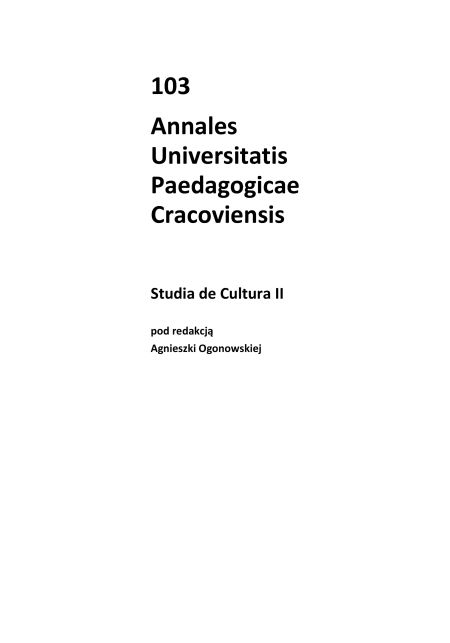Abstrakt
The use of photography in contemporary folklore studies
Contemporary folklore studies use photographs, especially family snapshots, to conduct narrative interviews in the course of a field work. They treat photography, which has broken the monopoly of spoken word in traditional culture, as a carrier of memory, human experiences and emotions, as images supported with words influence ways of comprehending the past and shaping the memory within local communities. New image-recording techniques also affect the method of carrying out field work, makingit possible to perpetuate the situation under investigation not only on a photographic platebut also on video carriers and digital tapes, thus extending the possibilities of interpreting the current folklore sources. Documentation collected in this way may be published on professional web portals along with the text.
The fact that image-recording tools have become so widespread also increases the pace of the changes taking place within the domain of traditional family and annual rituals: recordingvarious events (e.g. wedding receptions or Shrovetide ceremonies) on a videotape and then posting those videos on the Internet, especially on YouTube, sets a new area of field work for folklorists and speeds up the process of theatricalization and carnivalization of contemporary culture.
Bibliografia
Angrosino M. (2010), Badania etnograficzne i obserwacyjne, przeł. M. Brzozowska-Brywczyńska, Warszawa.
Zobacz w Google Scholar
Banks M. (2000), Materiały wizualne w badaniach jakościowych, przeł. P. Tomanek, Warszawa.
Zobacz w Google Scholar
Belting H. (2007), Antropologia obrazu. Szkice do nauki o obrazie, przeł. M. Bryl, Kraków.
Zobacz w Google Scholar
Bijak M. (wybór) (1987), Dopisane do fotografii, „Regiony” nr 2–4.
Zobacz w Google Scholar
Burszta W.J. (2008), Wielokulturowość – nowy globalny folkloryzm, w: Kiczosfery współczesności, red. W.J. Burszta, E.A. Sekuła, Warszawa.
Zobacz w Google Scholar
Didi-Huberman G. (2008), Obrazy mimo wszystko, przeł. M. Kubiak Ho-Chi, Kraków.
Zobacz w Google Scholar
Dudek K.J. (2009), Filmy weselne. Nowe media a zmiany w rytuale, „Kultura i Społeczeństwo” nr 4.
Zobacz w Google Scholar
Dzięcielewski R. (2004), Uroczyste wideofilmowanie. Kilka uwag etnografa, w: Antropologia wobec fotografii i filmu, red. G. Pełczyński, R. Vorbrich, Poznań.
Zobacz w Google Scholar
Folklorystyka jako antropologia słowa mówionego (2005), „Literatura Ludowa” nr 4–5.
Zobacz w Google Scholar
Geffroy Y. (1990), Family photographs: a visual heritage, „Visual Antrhropology” nr 3 [cyt. za: Banks 2000).
Zobacz w Google Scholar
Hajduk-Nijakowska J. (2005), Żywioł i kultura. Folklorystyczne mechanizmy oswajania traumy, Opole.
Zobacz w Google Scholar
Hermanowicz M. (2003), Fotografie 1968–2002, płyta CD, Paryż.
Zobacz w Google Scholar
Kadłubiec K.D. (1973), Gawędziarz cieszyński Józef Jeżowicz, Ostrawa.
Zobacz w Google Scholar
Mitosek Z., (2001), Rodzina w opowiadaniu, opowiadanie w rodzinie, w: Praktyki opowiadania, red. B. Owczarek, Z. Mitosek, W. Grajewski, Kraków.
Zobacz w Google Scholar
Nijakowski L. (2008), Polska polityka pamięci. Esej socjologiczny, Warszawa.
Zobacz w Google Scholar
Smolińska T. (1992), Rodzina o sobie. Folklorystyczny aspekt rodzinnej tradycji kulturowej, Opole.
Zobacz w Google Scholar
Pink S. (2009), Etnografia wizualna. Obrazy, media i przedstawienie w badaniach, przeł. M. Skiba, Kraków.
Zobacz w Google Scholar
Sikora S. (2004), Fotografia. Między dokumentem a symbolem, Warszawa
Zobacz w Google Scholar
Sontag S. (2009), O fotografii, przeł. S. Magala, Kraków.
Zobacz w Google Scholar
Stempel W.-D. (2004), Narracja potoczna jako prototyp, przeł. A. Nermer, w: Narratologia, red. M. Głowiński, Gdańsk.
Zobacz w Google Scholar
Sulima R. (1992), Słowo i etos. Szkice o kulturze, Warszawa.
Zobacz w Google Scholar
Sztompka P. (2006), Socjologia wizualna. Fotografia jako metoda badawcza, Warszawa.
Zobacz w Google Scholar

